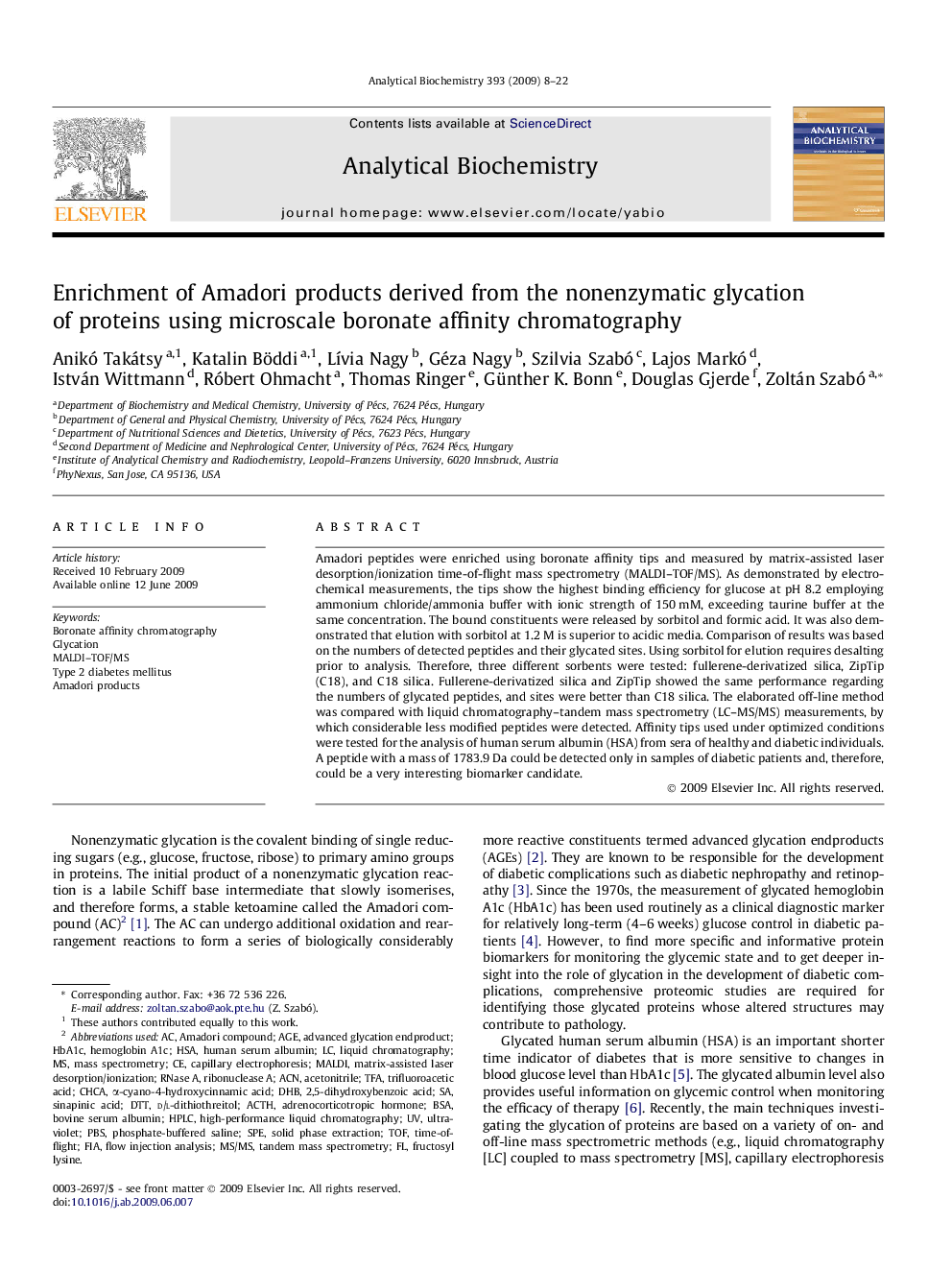| Article ID | Journal | Published Year | Pages | File Type |
|---|---|---|---|---|
| 1175068 | Analytical Biochemistry | 2009 | 15 Pages |
Amadori peptides were enriched using boronate affinity tips and measured by matrix-assisted laser desorption/ionization time-of-flight mass spectrometry (MALDI–TOF/MS). As demonstrated by electrochemical measurements, the tips show the highest binding efficiency for glucose at pH 8.2 employing ammonium chloride/ammonia buffer with ionic strength of 150 mM, exceeding taurine buffer at the same concentration. The bound constituents were released by sorbitol and formic acid. It was also demonstrated that elution with sorbitol at 1.2 M is superior to acidic media. Comparison of results was based on the numbers of detected peptides and their glycated sites. Using sorbitol for elution requires desalting prior to analysis. Therefore, three different sorbents were tested: fullerene-derivatized silica, ZipTip (C18), and C18 silica. Fullerene-derivatized silica and ZipTip showed the same performance regarding the numbers of glycated peptides, and sites were better than C18 silica. The elaborated off-line method was compared with liquid chromatography–tandem mass spectrometry (LC–MS/MS) measurements, by which considerable less modified peptides were detected. Affinity tips used under optimized conditions were tested for the analysis of human serum albumin (HSA) from sera of healthy and diabetic individuals. A peptide with a mass of 1783.9 Da could be detected only in samples of diabetic patients and, therefore, could be a very interesting biomarker candidate.
